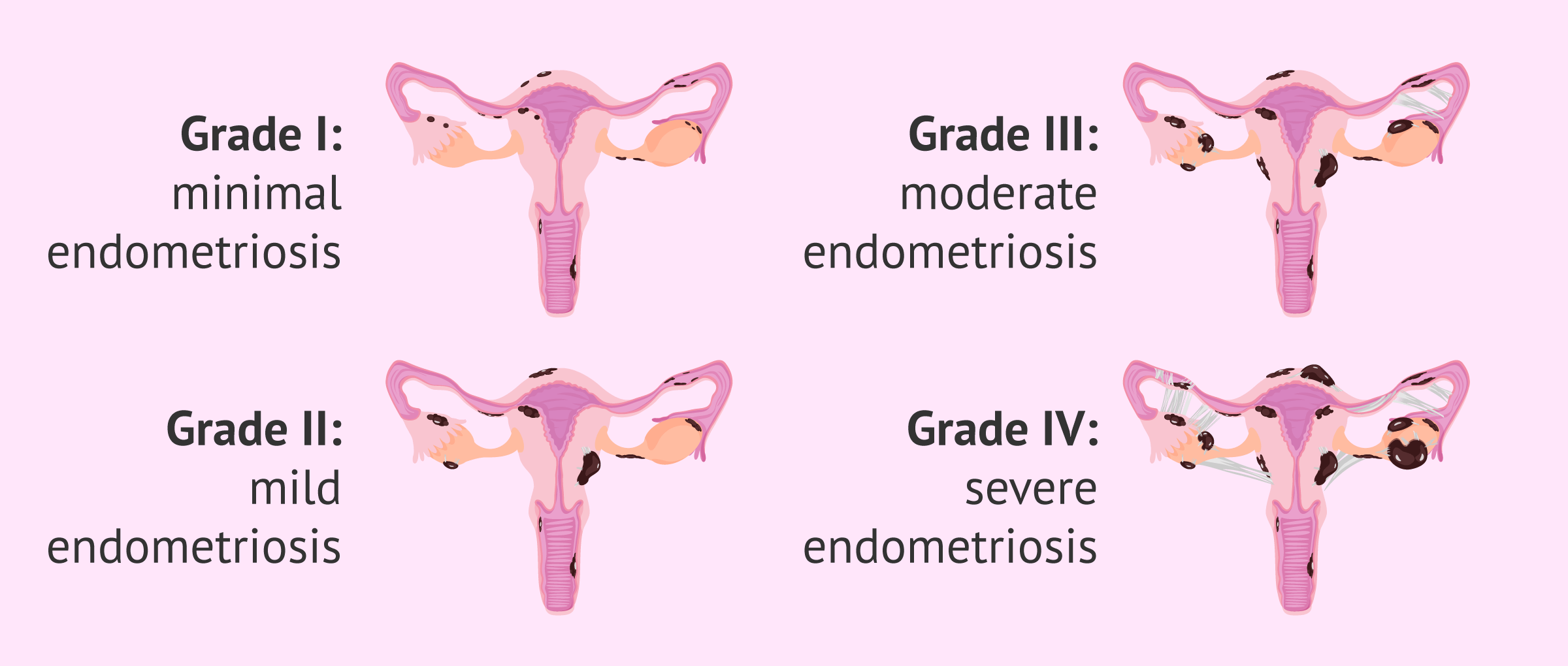Endometriosis is a uterine disorder characterised by the presence of endometrial tissue outside the uterus. It usually appears in the ovaries and fallopian tubes, but can also occur in other locations. Depending on its severity, endometriosis is classified into 4 grades:
- Grade I or minimal endometriosis
- is the presence of small, isolated endometrial implants
- Grade II or mild endometriosis
- There are more endometrial cysts than in grade I, but it is still mild.
- Grade III or moderate endometriosis
- is endometriosis in which the endometrial tissue begins to expand further and even some adhesions appear on the ovaries.
- Grade IV or severe endometriosis
- is the most complicated endometriosis and, therefore, the woman will have problems conceiving.
Depending on the type of endometriosis diagnosed, the specialist will establish the best form of treatment for the woman. Sometimes only painkillers, hormone treatment, surgery or cyst removal is needed to achieve pregnancy naturally. In other cases, it will be necessary to resort to assisted reproduction.
Read the full article on: How does endometriosis affect a woman’s fertility? ( 29).
By Blanca Paraíso M.D., Ph.D., M.Sc. (gynecologist), Manuel Aparicio Caballero M.D., M.Sc. (gynecologist), Marta Barranquero Gómez B.Sc., M.Sc. (embryologist) and Zaira Salvador B.Sc., M.Sc. (embryologist).
Last Update: 08/18/2021
